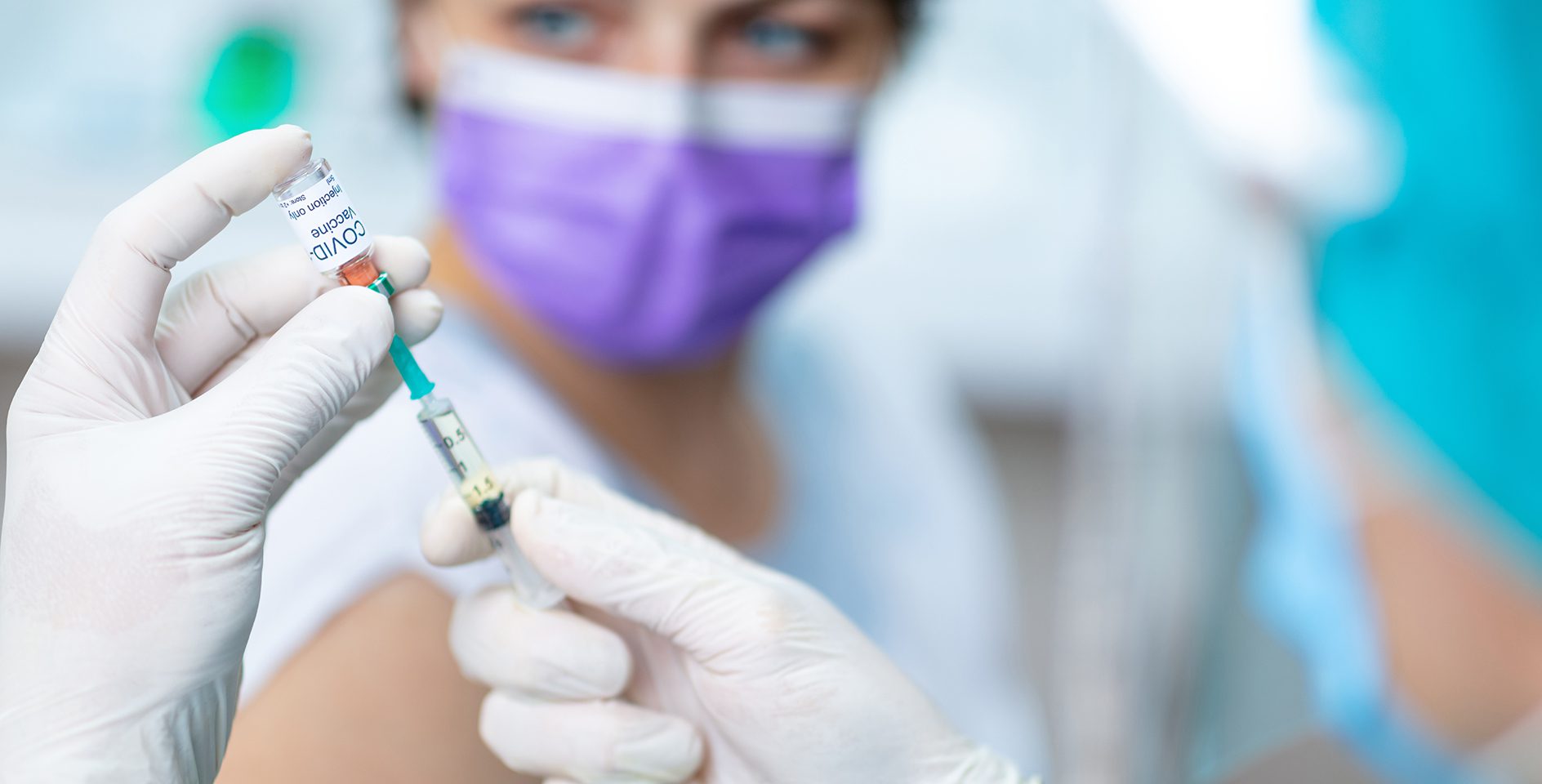On Tuesday, President Joe Biden outlined his plans for addressing the next stage of the coronavirus pandemic. The president pledged to make 600 million doses of the COVID-19 vaccines available by the end of July and said that teachers should be moved “up the hierarchy” of the vaccine queue.
Here’s what you should know about vaccine prioritization and when you can expect to receive the vaccine.
How are the vaccines being rationed?
There are several factors that result in the vaccines being rationed and given to certain groups of people before others. The primary factor is the extraordinary demand for the vaccines. There are approximately 210 million adults in the U.S., and to reach herd immunity about 80-90% will need to be vaccinated. That means 168 to 189 million U.S. adults need to receive the vaccine. Some of the vaccines also require two doses, which puts a further constraint on the supply.
The first coronavirus vaccine was administered to U.S. health-care workers a mere two month ago, on December 14, 2020. To date, about 16 million people have been fully vaccinated. At the rate of 1.5 million doses a day, vaccinating 80-90% of the adult population won’t occur until late July or early August.
The second factor is that not everyone has an equal likelihood of being exposed to or affected by COVID-19. Some people are more likely to be exposed because of their jobs, while others are more vulnerable because of their age or health conditions. While it may appear more fair to distribute the vaccines on a first-come, first-served basis, the result of taking such an approach would be tens of thousands of preventable illnesses and deaths.
Who decides which groups are given priority for vaccines?
The CDC has provided recommendations for who should be offered priority in receiving a COVID-19 vaccine. But each individual state is responsible for deciding who will be vaccinated first and how they can receive vaccines.
What are the CDCs recommendations for who should be given priority on the vaccines?
The CDC recommends giving COVID-19 vaccine in four, somewhat overlapping, phases.
Phase 1a includes healthcare personnel and long-term care facility residents. These are the first groups because of their increased chances of being directly exposed to the virus. Healthcare personnel, according to the CDC, should include all paid and unpaid persons serving in healthcare settings who have the potential for direct or indirect exposure to patients or infectious materials. This includes such personnel as doctors, nurses, dentists, dental hygienists, pharmacists, and hospital cafeteria workers.
Similarly, the communal nature of long-term care facility residents and the population served (who are generally older adults with underlying medical conditions) puts this group at increased risk of infection and severe illness from COVID-19. (As the CDC notes, by November 6, 2020, approximately 569,000–616,000 COVID-19 cases and 91,500 deaths were reported among LTCF residents and staff members in the United States, accounting for 39% of deaths nationwide.)
The next category is Phase 1b, which includes frontline essential workers and people aged 75 years and older. Frontline essential workers such as police officers, fire fighters, corrections officers, food and agricultural workers, United States Postal Service workers, manufacturing workers, grocery store workers, public transit workers, and those who work in the educational sector (e.g., teachers, support staff, daycare workers). People aged 75 years and older are also at high risk of hospitalization, illness, and death from COVID-19.
The third category is Phase 1c, which includes those aged 65-74 years, people aged 16-64 years with underlying medical conditions which increase the risk of serious, life-threatening complications from COVID-19, and other essential but non-frontline workers. This last group includes people who work in transportation and logistics, food service, housing construction and finance, information technology, communications, energy, law, media, public safety, and public health.
The final category is all other persons who did not fall into the previous listing of groups.
Who exactly is a “frontline essential worker”?
During the quarantine stage of the pandemic, the U.S. government had to decide which jobs were necessary for the economy to function. According to the U.S. Department of Homeland Security, essential workers are those who conduct a range of operations and services that are typically essential to continue critical infrastructure operations, such as energy, defense, or agriculture.
The US. Cybersecurity and Infrastructure Security Agency (CISA) created a list of such essential workers to aid federal agencies and state governments in determining who should qualify. Currently, of the 43 states with essential worker orders or directives, 21 now defer to the federal definitions developed by the CISA.
Because the list includes so many people, the Advisory Committee on Immunization Practices (ACIP) had to narrow the list. ACIP used CISA guidance to define frontline essential workers as the subset of essential workers likely at highest risk for work-related exposure to SARS-CoV-2 because their work-related duties must be performed on-site and involve being in close proximity (six feet or less) to the public or to coworkers. ACIP has classified the following non–health care essential workers as frontline workers: first responders (e.g., firefighters and police officers), corrections officers, food and agricultural workers, U.S. Postal Service workers, manufacturing workers, grocery store workers, public transit workers, and those who work in the education sector (teachers and support staff members) as well as child care workers.
Some states use the ACIP guidance and narrow or broaden the category even further. But there appears to be no clear rationale for how such determinations are made. As the National Conference of State Legislatures observes, “in some states workers supporting religious organizations and churches are considered essential, while in some others workers who support the cannabis industry receive the essential designation.”
Why aren’t ministers included in the category of essential workers?
There are sound reasons to include clergy in the list of essential workers. Many pastors serve some of the same functions as groups currently performed by essential workers. Clergy, for example, provide mental health services (e.g., counseling), aid those with special needs, and even serve in the distribution of food and other resources. Some ministers are also exposed in the same way as healthcare workers. Catholic priests, for instance, are required to perform “last rites” on Catholics who are dying of COVID. Many pastors may also be exposed when performing funerals.
For the purposes of phase 1b vaccinations, clergy are considered frontline essential workers in some states, such as Kentucky, North Carolina, and Pennsylvania.









